Hip Pain and the Sneaky Tensor Fasciae Latae
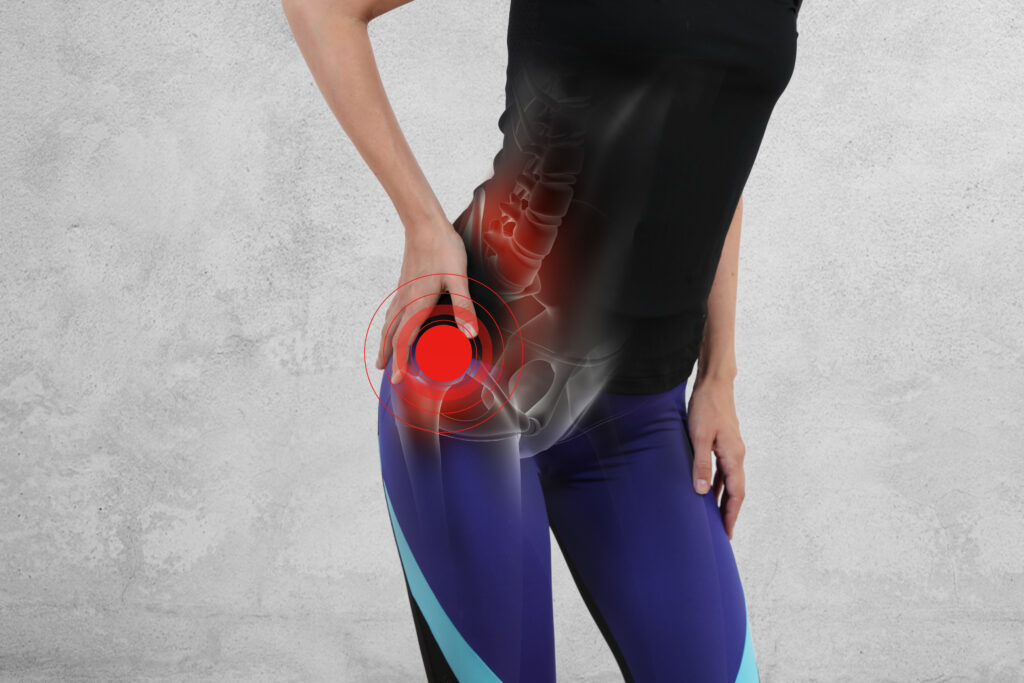
By Chris Fletcher
Some types of hip pain can come on gradually and progressively worsen until the front of one or both hips become painful during Jiu-Jitsu and even while sitting or sleeping. A leg shield requires quite a lot of gluteal and core strength, however when someone is passing our guard, we ask our body to bring any and all muscles around the hip joint to help strengthen our shield.
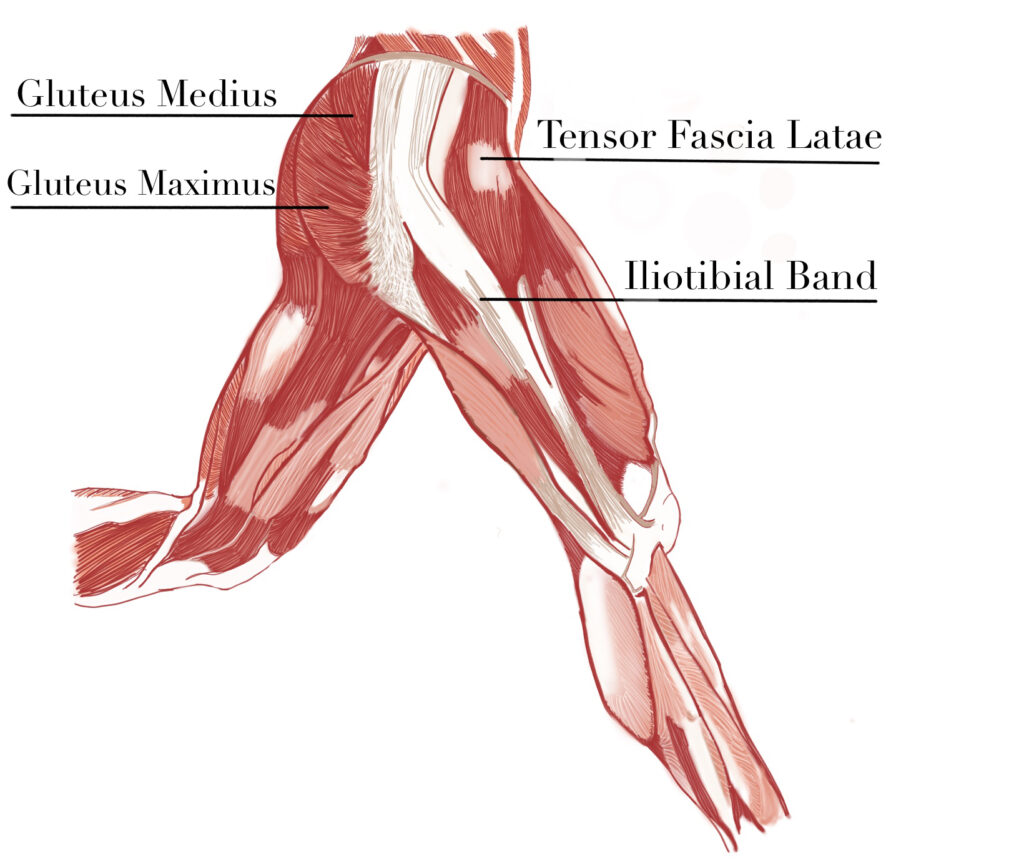
Greater trochanteric pain syndrome presents as chronic pain over the front, side or back of the hip that is made worse by activity or lying on the painful side. It is most likely caused by repetitive friction between the greater trochanter (a bony bump on the outside of the femur) and the iliotibial band (ITB) causing repetitive microtrauma of the gluteal tendons that insert on the greater trochanter. This then causes inflammation, degeneration, and increased tension of the ITB. (1) The tensor fascia latae (TFL) is the muscle at the front of the hip that is the top of the ITB.
The gluteal muscles, specifically gluteus maximus and medius, are made up of type I fibers and the TFL is predominantly made up of type II fibers. (2) Type I fibers are called slow twitch and considered to be postural muscles that help stabilize and can be active for long periods of time.
Type II fibers are called fast twitch muscles and can quickly generate force but also fatigue quickly.
Women with lateral hip pain, compared to women without hip pain, have significantly smaller gluteus maximus, medius, and minimus with fatty infiltrate in the gluteus maximus and minimus.
The TFL was similar in size in both groups and had no fatty infiltration (3). When a muscle has fatty infiltration, it usually indicates that the muscle is not being used.
The TFL is a muscle that is both on the front and the side of the hip which gives it a lot of mechanical advantage for both bringing the hip up (flexion) and out to the side (abduction). When the gluteal muscles are weak and cannot counter the muscle activation of the TFL, the hip gets artificially pulled up (flexed) and rolled in (internally rotated). Basically the TFL runs amuck and takes over as the stabilizer of the hip joint. Considering it is a small, fast twitch muscle, it was never meant to do this job which leads to pain and weakness.
We need our leg frames to be strong as Jiujiteiras, and if we have underactive gluteal muscles and an overactive TFL, not only will our leg frames get crushed, but we are at a high risk of developing hip pain, potential gluteal muscle tearing, and eventually osteoarthritis. So please keep working on strengthening your gluteal muscles and core.
Disclaimer: The content in this article is for informational purposes only – it is not intended to delay or substitute for professional medical advice, diagnosis, and/or treatment. The content is not intended to promote understanding of various musculoskeletal injuries. Content may not apply to your specific condition or symptoms. Always seek the advice of your physician or other qualified medical professional for any question you have for a medical condition.
References:
1. Reid D. The management of greater trochanteric pain syndrome: A systematic literature review. J Orthop. 2016 Mar; 13(1): 15–28.
2. Flack N, Woodley SJ, Nicholson HD. Fiber type composition of the hip abductor muscles. Anatomy. Feb 2021.
3. Cowan RM, Semciw AI, Pizzari T, Cook J, Rixon MK, Gupta G, Plass LM, Ganderton CL. Muscle Size and Quality of the Gluteal Muscles and Tensor Fasciae Latae in Women with Greater Trochanteric Pain Syndrome. Clinical Anatomy. Volume 33, Issue 7, Oct 2021.

Our printed magazine is full of extraordinary women with extraordinary stories, get your printed copy via mail today >



 Return to Play
Return to Play 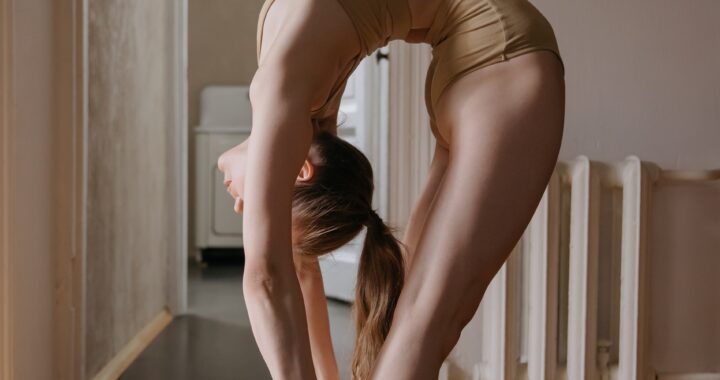 Hypermobility Spectrum Disorder
Hypermobility Spectrum Disorder 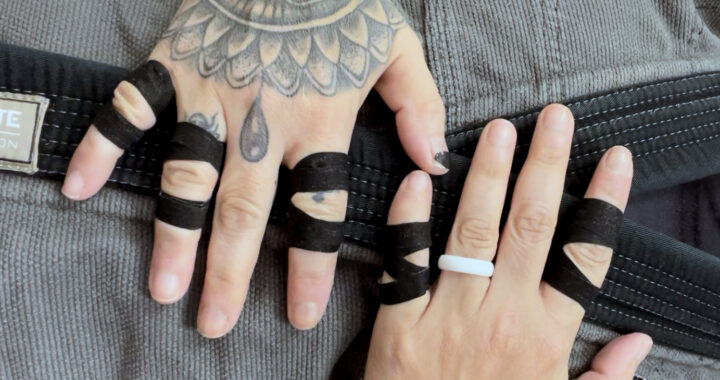 Finger Pulley Injuries and the Value of Taping
Finger Pulley Injuries and the Value of Taping  Low Back Pain
Low Back Pain 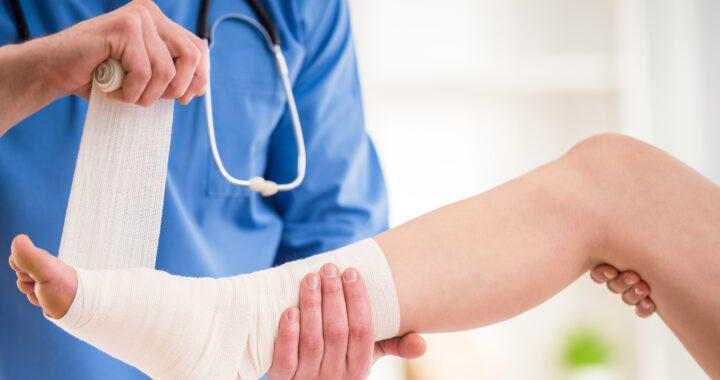 Toe Hold
Toe Hold 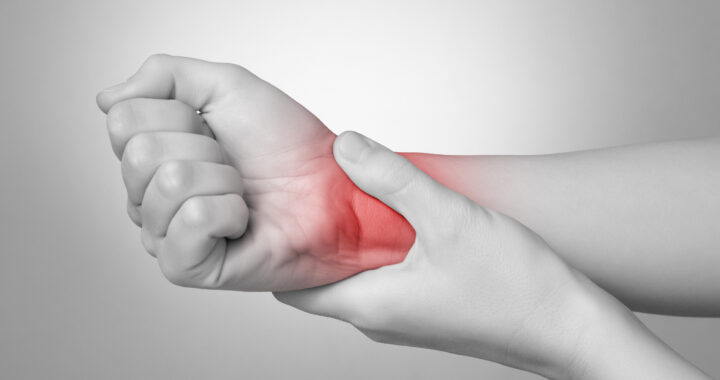 Wrist Locks:
Wrist Locks: 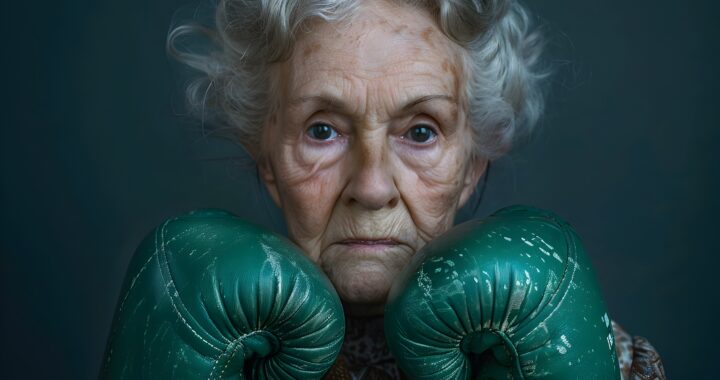 Father Time is Undefeated
Father Time is Undefeated 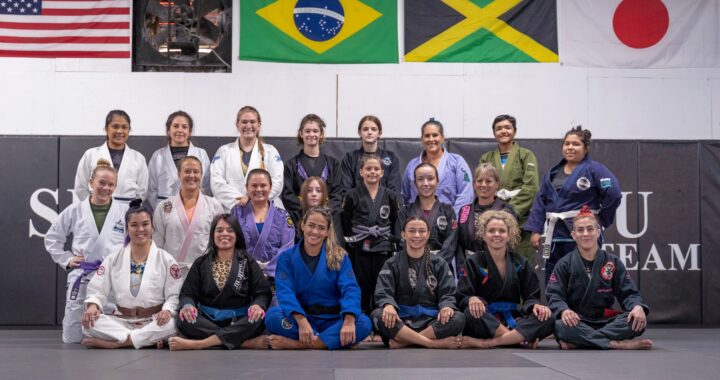 The Jiujiteira Sisterhood
The Jiujiteira Sisterhood 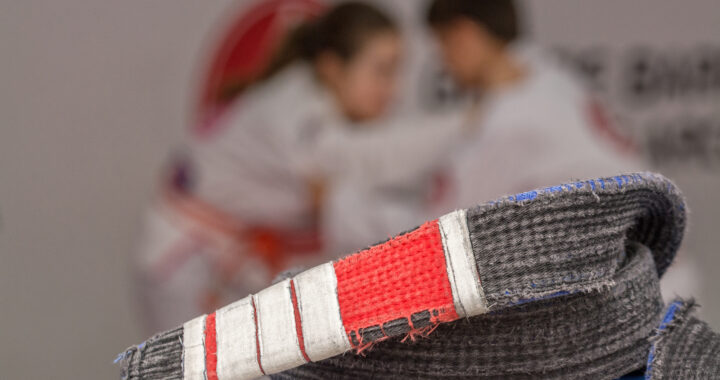 Advice in the Ranks- From White to Black
Advice in the Ranks- From White to Black  ADGS Rome: Jiujiteiras Shine in the Land of the Colosseum
ADGS Rome: Jiujiteiras Shine in the Land of the Colosseum